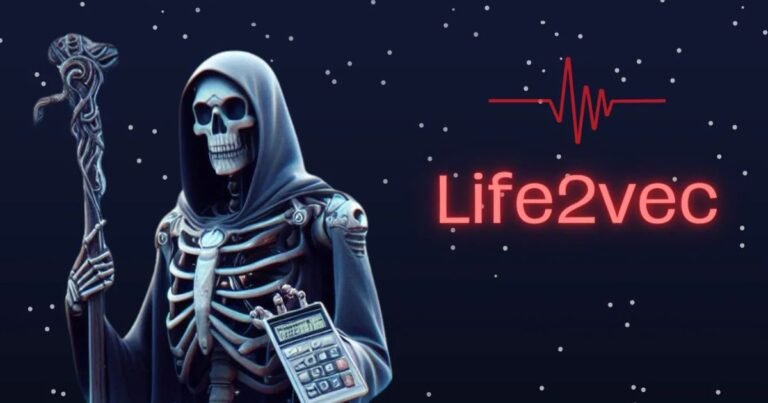Dupuytren’s contracture, commonly referred to as Loguytren problems due to frequent misspelling, is a progressive hand condition that can significantly impact daily life. Understanding this condition—its causes, symptoms, and treatment options—is crucial for effective management. In this comprehensive guide, we will explore everything you need to know about Loguytren problems, from initial symptoms to advanced treatment options, ensuring you are well-equipped to handle this condition.
What Are Loguytren Problems?
Loguytren problems, or Dupuytren’s contracture, represent a chronic, progressive disorder affecting the connective tissue in the palm of the hand. This condition primarily involves the palmar fascia, a layer of connective tissue beneath the skin. Over time, the fascia thickens, forming cords that can pull one or more fingers into a flexed position, often affecting the fourth and fifth fingers. While the condition is typically painless, its impact on hand function can be profound, leading to difficulties in performing everyday tasks.
Distinguishing Facts
- Familial Tendency: Dupuytren’s contracture often runs in families, indicating a genetic predisposition.
- Progressive Nature: The symptoms can develop gradually over several years, making early detection critical.
- Not Trauma-Induced: Unlike many hand injuries, this condition is not caused by trauma or overuse.
Common Symptoms of Loguytren Problems
Identifying the symptoms of Loguytren problems early can significantly influence treatment outcomes. Symptoms typically worsen gradually, and early intervention is crucial.
Key Symptoms Include
- Thickened Skin of the Palm: A noticeable lump or nodule may form near the base of the ring or little finger.
- Formation of Cords: Bands of tissue begin to develop, pulling fingers towards the palm.
- Finger Contracture: One or more fingers may bend down permanently, making it difficult to straighten them.
- Loss of Hand Function: Difficulties in performing daily activities like shaking hands, tying shoelaces, or gripping objects.
Personal Insights
Many individuals report feeling isolated due to the limitations imposed by Loguytren problems. Sharing personal experiences can highlight the emotional and psychological toll of the condition.
Causes and Risk Factors of Dupuytren Problems
While the exact cause of Dupuytren’s disease remains unclear, several genetic and environmental factors have been identified as potential triggers.
Major Risk Factors
- Genetics: A family history of Dupuytren’s contracture significantly increases the likelihood of developing the condition. According to studies, up to 30% of individuals with Dupuytren’s have a relative with the same condition.
- Age: The condition is most commonly diagnosed in individuals over the age of 50, with the prevalence increasing with age.
- Gender: Men are more likely than women to develop Loguytren problems, with a ratio of approximately 3:1.
- Ethnicity: The condition is notably more prevalent among individuals of Northern European descent.
- Alcohol Consumption: Chronic alcohol use has been linked to an increased risk of developing connective tissue disorders, including Dupuytren’s.
- Diabetes: Individuals with diabetes are at a higher risk of developing various connective tissue disorders, including Dupuytren’s contracture.
- Smoking: Nicotine use may contribute to the thickening of tissues in the palms.
Diagnosis of Loguytren Problems
Early diagnosis of Loguytren problems is essential for effective management. The diagnostic process is typically straightforward and involves several steps.
Diagnostic Steps
- Visual and Tactile Examination: A healthcare professional will inspect the hand for nodules, cords, and any signs of contracture.
- Tabletop Test: Patients are asked to place their hand flat on a surface. Inability to do so is a significant indicator of contracture.
- Medical History Review: Understanding any family history or related conditions can assist in diagnosis.
- Imaging Tests: While rarely needed, X-rays or MRIs may be ordered if other underlying conditions are suspected.
Treatment Options for Loguytren Problems
Although there is currently no cure for Loguytren problems, various treatment options can help manage symptoms and slow disease progression.
1. Non-Surgical Treatments
Non-surgical interventions are usually recommended for individuals in the early stages of Dupuytren’s contracture, or when symptoms are mild.
- Steroid Injections: These help reduce inflammation and slow the progression of the condition. Studies have shown that steroid injections can alleviate symptoms temporarily but are not a long-term solution.
- Needle Aponeurotomy: A minimally invasive procedure where a needle is used to break the fibrous cords. This outpatient procedure has a relatively quick recovery time but may have a high recurrence rate.
- Enzyme Injections (Collagenase): Collagenase injections help dissolve the cords, allowing fingers to regain more mobility. This method has been particularly effective for patients with mild to moderate contracture.
2. Surgical Treatments
Surgery is typically considered when contractures become severe, impacting hand function significantly.
- Fasciectomy: This surgical procedure involves removing the thickened tissue. It is effective for severe cases but may require a longer recovery time.
- Dermofasciectomy: A more extensive surgery that removes both the skin and fascia, often necessitating skin grafts. This option is usually reserved for the most severe cases and has lower recurrence rates.
- Finger Joint Fusion: In extreme cases where joint alignment is significantly affected, fusion of the joint may be performed to improve function.
Comparison of Treatment Options
| Treatment Type | Description | Pros | Cons |
|---|---|---|---|
| Steroid Injections | Anti-inflammatory drugs injected into nodules | Quick relief, non-invasive | Temporary effect, not suitable for late stages |
| Needle Aponeurotomy | Needle used to break fibrous cords | Outpatient procedure, fast recovery | High recurrence rate |
| Enzyme Injections | Collagenase to dissolve cords | Minimally invasive, good for early stage | Possible allergic reactions |
| Fasciectomy | Surgical removal of affected tissue | Effective for severe cases | Long recovery, potential complications |
| Dermofasciectomy | Tissue and skin removed, graft applied | Lower recurrence than other surgeries | Requires skin grafts, longer healing time |
Complications of Untreated Loguytren Problems
Failing to address Loguytren problems can lead to severe complications that may further diminish hand function.
Possible Complications
- Permanent Contracture of Fingers: Without treatment, fingers may become permanently bent, severely limiting hand use.
- Joint Stiffness: Over time, untreated contractures can lead to stiffness in the affected joints.
- Reduced Grip Strength: Many individuals experience a noticeable decrease in grip strength, affecting their ability to perform daily tasks.
- Emotional and Psychological Impact: The inability to perform simple tasks can lead to frustration, anxiety, and social withdrawal.
- Skin Ulcers: In severe cases, tension in the palm can lead to skin ulcers and infections.
Prevention Tips for Loguytren Problems
While there is no guaranteed way to prevent Loguytren problems, certain lifestyle choices can minimize risk and slow progression.
Prevention Strategies
- Quit Smoking: Nicotine use constricts blood flow and may worsen tissue conditions. Quitting can improve overall hand health.
- Limit Alcohol Consumption: Reducing alcohol intake can decrease the risk of developing connective tissue disorders.
- Hand Stretching Exercises: Regular stretching can help maintain flexibility in fingers and palms, potentially slowing contracture progression.
- Manage Underlying Conditions: Keeping diabetes and thyroid issues under control may reduce the risk of developing Dupuytren’s contracture.
- Regular Hand Checkups: If you have a family history of Dupuytren’s contracture, regular checkups with a healthcare professional can facilitate early detection.
Life With Loguytren Problems: Daily Advice
For those living with Loguytren problems, adapting daily routines can significantly improve quality of life.
Practical Tips
- Use Assistive Devices: Ergonomic grips for pens, utensils, and keyboards can help make daily tasks easier and reduce strain.
- Apply Warm Compresses: Warmth can help relax tissues before stretching, making exercises more effective.
- Engage in Occupational Therapy: Working with a therapist can provide strategies to modify tasks and reduce pressure on affected areas.
- Track Symptoms: Keeping a diary of symptoms can help monitor changes and facilitate discussions with healthcare providers.
- Consider Joining a Support Group: Sharing experiences with others who face similar challenges can provide emotional support and practical advice.
Conclusion: Managing Loguytren Problems for a Better Life
Loguytren problems—Dupuytren’s contracture—are not life-threatening, but they can significantly affect daily interactions and overall quality of life. Early awareness and timely intervention are key to managing the condition effectively. Whether considering non-surgical treatments or planning for surgery, understanding the full scope of Loguytren issues empowers individuals to make informed decisions about their health and lifestyle.
With proactive management, education, and support, you can regain your ability to function effectively and confidently engage in everyday activities.








